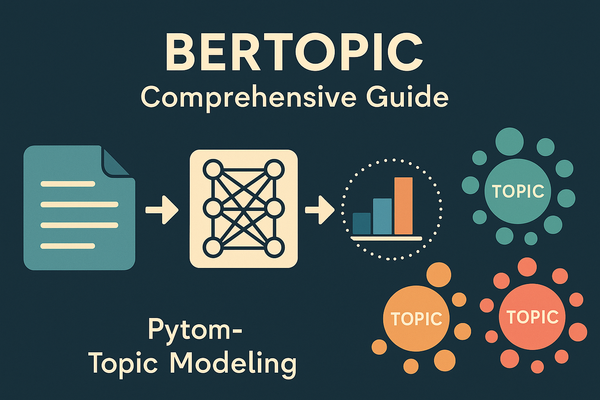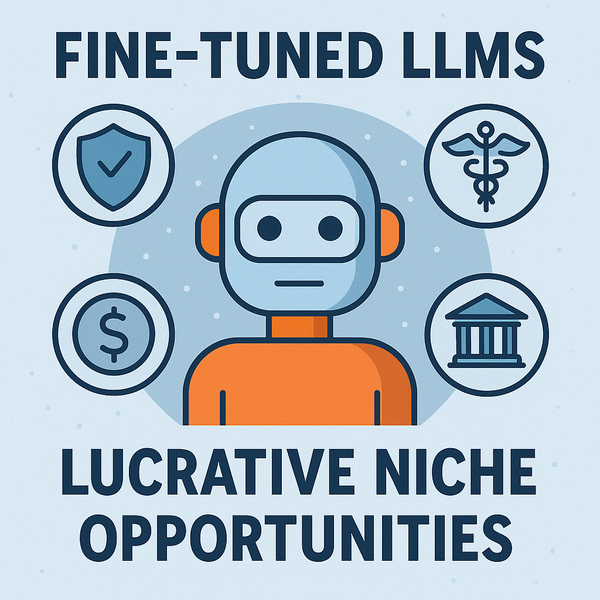Building a Personal Chatbot: Bringing Your AI Self to Life
Build the AI version of yourself and allow your connections to chat with it and ask about your personality and interests.

Have you ever wished for a chatbot that truly represents you? Imagine a virtual friend who not only knows you but can also articulate your personality, interests, and expertise with flair. Building a personal chatbot is a fun and deeply rewarding project, blending technical challenges with creative satisfaction. In this blog, we’ll explore the architecture of a personal chatbot, dive into its components, and humanize the system to make the technical details more approachable.
Let’s build your digital twin!
Meet the Team: Humanizing the Chatbot Components
Every chatbot is like a team of specialists, each with its own role. Let’s meet the crew:
1. The Memory: SQLite and Vector Database
Think of SQLite as your chatbot’s diary—a personal notebook where it stores all your LinkedIn posts, articles, and witty comments.
But memory isn't just about keeping notes; it’s about recalling them at the right time. That’s where the vector database steps in, acting as the librarian. It organizes the diary into a searchable format, so the chatbot doesn’t awkwardly stare into space when asked about your favorite blog from 2019.
- Technical Choice: SQLite is lightweight and perfect for small-scale projects. Add a vector database like FAISS or Cloudflare Vectorize for semantic search.
- Fun Analogy: It’s like having a librarian with superhuman memory who can recall not just words but their meaning and context.
The ecosystem around SQLite is growing in provide a large number of extensions that can be used for Vector search and integrations with Ollama for embedding and LLM inferencing.


2. The Brain: The Large Language Model (LLM)
This is the chatbot’s most charming and talkative member. The Large Language Model (LLM)—like OpenAI’s GPT or a self-hosted Ollama model—is the witty conversationalist of your chatbot. It processes user queries, combines them with the memory’s information, and crafts responses that make you seem even smarter than you are.
- Technical Choice: Use a cloud-hosted LLM or a Dockerized Ollama instance for more control. Integrate it via Cloudflare AI Gateway to switch between LLMs effortlessly.
- Fun Analogy: The LLM is your chatbot’s “personality engine.” It’s like the friend who can quote your favorite movie while helping solve math problems.



3. The Heartbeat: FastAPI Backend
The FastAPI backend is the lifeblood of your chatbot. It connects all the components, ensuring smooth conversations. It takes the user’s input, asks the brain (LLM) for a response, and double-checks with the memory (vector database) for accuracy. It’s the silent hero, working tirelessly to keep the chatbot functioning.
- Technical Choice: FastAPI offers a clean framework for building and deploying APIs. Hosting it on Google Cloud Run ensures scalability and cost-effectiveness.
- Fun Analogy: FastAPI is like the operations manager at a café. You place your order, and they coordinate with the barista, the kitchen, and even the mailman to serve you that perfect cup of coffee. Just be careful you tip generously!!
4. The Face: Static Website and Chat Widget
Every star needs a stage, and your chatbot is no different. A simple static website acts as its stage, while the chatbot widget is its face. This is where users interact with your AI, asking questions, sharing laughs, and learning more about you.
- Technical Choice: Use HTML/CSS with optional TailwindCSS for styling. Deploy on Cloudflare Pages for a fast, secure, and globally available experience.
- Fun Analogy: The website is like your chatbot’s Instagram profile—always looking its best and ready to make a great first impression.
5. The Soul: Embeddings and Semantic Search
What makes your chatbot feel like you is its understanding of context. Embeddings turn your words, thoughts, and ideas into mathematical vectors that the brain can understand. Think of embeddings as the soul of your chatbot, capturing the essence of what you’ve shared online.
- Technical Choice: Generate embeddings with OpenAI or a local model like SentenceTransformers. Store them in a vector database for quick access.
- Fun Analogy: Embeddings are like the flavors of your life—each one unique, combining to make you unforgettable.
6. The Engine Room: Docker and Google Cloud Run
Docker and Google Cloud Run form the powerhouse of your chatbot, ensuring it runs efficiently and consistently, no matter the environment. Docker packages all your dependencies, code, and configurations into a single container, making deployment a breeze. Google Cloud Run takes this container and scales it dynamically, ensuring your chatbot is always ready to respond, even during peak traffic.
- Technical Choice:
- Docker: Provides a consistent runtime environment across development, testing, and production.
- Google Cloud Run: Automatically scales your app based on incoming traffic, saving resources when idle and ramping up when needed.
- Fun Analogy: Docker is like packing all your chatbot’s belongings into a suitcase, ensuring nothing is forgotten. Google Cloud Run is the private chauffeur that drives the suitcase wherever it needs to go, scaling the car size depending on the number of passengers (requests).
- Additional Perk: This combination ensures:
- Portability: Your chatbot can run anywhere Docker containers are supported.
- Cost Efficiency: You only pay when the chatbot is actively handling requests, making it an economical choice for personal projects.
With Docker and Google Cloud Run, your chatbot becomes not just smart but also robust and ready for action on a global scale!
How the Magic Happens: The Chatbot’s Daily Routine
Let’s walk through a day in the life of your chatbot:
- User Input: Someone visits your website and asks, “What’s your take on AI in education?”
- Memory Check: The chatbot searches its vector database for relevant LinkedIn posts or articles you’ve written about AI in education.
- Brainstorming: The LLM combines the memory’s insights with its conversational skills to craft a response.
- Delivery: The response is sent back to the user through the chat widget.
- Refinement: If the user wants more details, the chatbot refines its answer, digging deeper into its memory.
The Fun and Frustration of Building a Chatbot
While building a chatbot is rewarding, it’s not without its quirks:
- Fun: Seeing your chatbot answer a tough question like a pro is pure joy.
- Frustration: Watching it confidently give a wrong answer will make you question your life choices.
- Pro Tip: Always validate outputs with your memory to avoid embarrassing blunders.
Closing Thoughts: Building Your Digital Twin
Creating a personal chatbot is like crafting a digital version of yourself—one that never sleeps, never gets tired, and is always ready to share your story.
It’s a mix of art and engineering, combining technical finesse with personal touch.
Whether you’re a tech enthusiast or a curious beginner, this journey will challenge and inspire you. So, roll up your sleeves and start building your digital twin today!






